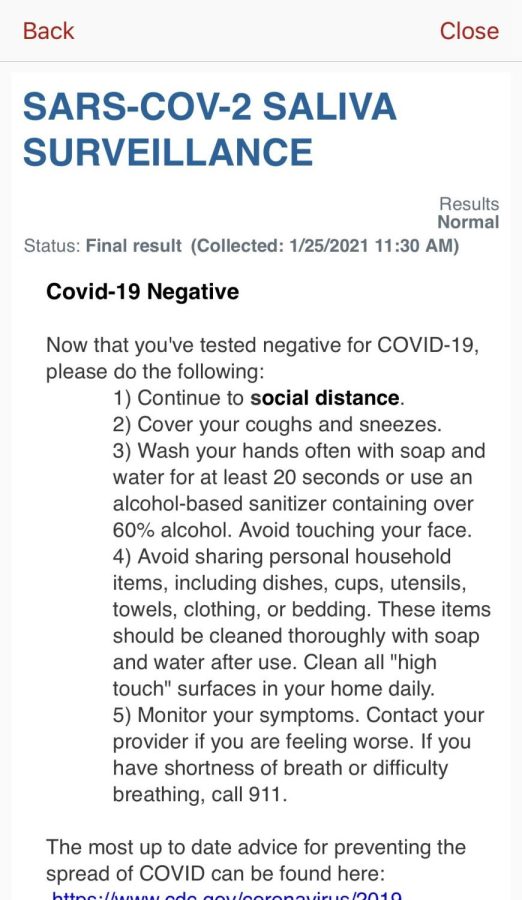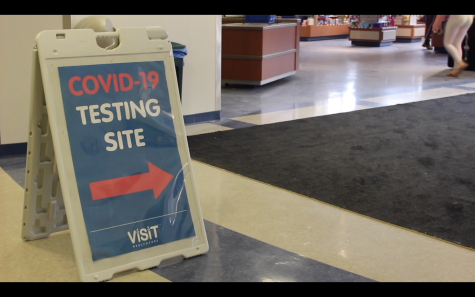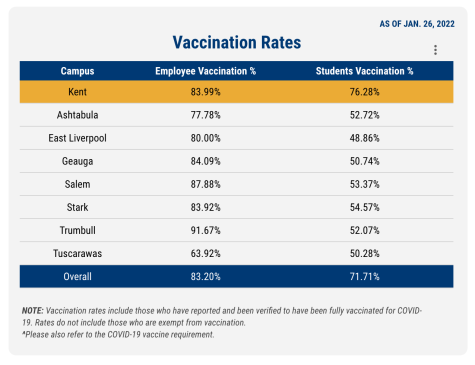Kent State vs. OSU: Students share how their schools handled COVID-19
February 7, 2021
Over the last 10 months, universities have been heavily challenged by COVID-19. From changes in dining halls to testing students, students from the Ohio State University and Kent State adjust to the changes in campus life.
With thousands of students living on campus, testing was not only a priority but a big hurdle for universities. At OSU, the style and process for testing has been relatively the same for the entire school year.
Last semester at OSU, only on-campus students were required to get tested. This semester, OSU requires on-campus as well as off-campus students to get weekly tests. Samantha Fernandez, a sophomore at OSU, talked about what getting tested was like.
“[Administration wasn’t] gonna keep track of how many tests you took each week but they would find you if you didn’t take a test at all. … You sign up virtually to get the test,” Fernandez said. “When you get there they have you swipe your student ID to check you in. … They hand you a testing kit, they send you to a table, you spit in the tube, mark that you did your test and then send it out.” She also clarified that asymptomatic and symptomatic testing takes place in separate buildings.
At KSU, testing changed greatly after the fall semester. In the fall, “you were expected, you weren’t forced to go get tested. … They had a certain amount of tests a day at one location so it was actually pretty hard to get tested,” said Morgan Cummings, a KSU sophomore public relations major. “The only enforcer they had was to say it’s mandatory through an email.”
This semester, testing is required for all on-campus students. According to KSU’s website, refusal to get tested will result in disciplinary actions following the student code of conduct. While testing is covered by KSU and provided by CVS, students have voiced concerns about the process.
Ally Landrum, a sophomore fashion design major at KSU, said that all testing happens in the same building, the KSU Ice Arena, and “it’s not efficient at all. I waited in line at the COVID testing site for two hours just to get the test. Even though you have to make an appointment, I showed up half an hour before mine and I still waited for two hours in the line.”
The process for testing is similar to the one at OSU: check in and fill out paperwork, bring it to one of the tables and take the test (OSU uses the spit test and KSU uses the swab, but both are rapid tests) then wait for your results. At both schools, if you test positive you go further into the building for more testing or filling out information for quarantine.
When it came to quarantining, both schools had a similar system. Though it’s recommended that students quarantine, “[KSU wasn’t] enforcing that. You could stay in your room, you could go get food, talk with friends … they weren’t watching you. It was the honor system,” Cummings said.
Fernandez also mentioned that no one was checking on quarantined students at OSU, aside from food being delivered to their doors. “You had to stay there but if it was like emergency necessities or you had to walk to the health center … nobody was monitoring you,” Fernandez said.
Though Landrum, Cummings and Fernandez weren’t satisfied with the handling of the pandemic by their respective schools, they recognize that it’s no easy job. “I think there was a learning curve, like in the beginning maybe we didn’t do such a great job,” Landrum said. “But no school did.”
Ethan Cohen is a COVID-19 reporter. Contact him at [email protected].



















